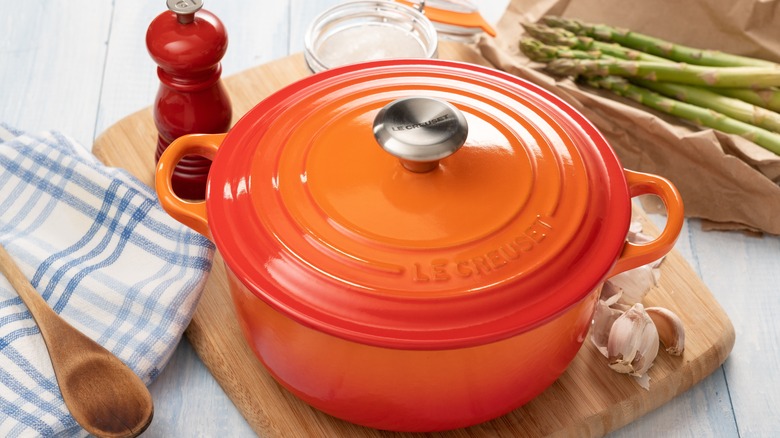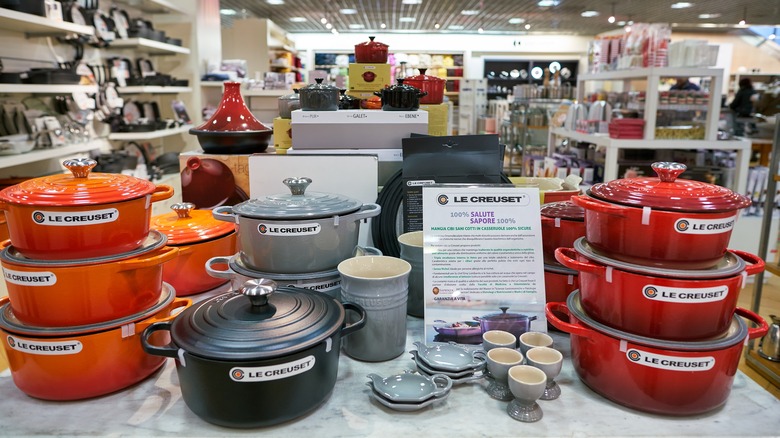How Le Creuset Got Its Name
It's not an exaggeration to say that whenever we hold a cast iron pot or pan, we're holding something that is several thousand years in the making. America's Test Kitchen says the ability to make cast iron cookware has been around since the 6th century B.C. and was first pioneered in China, where craftsmen used a mold to form molten metal.
Though enamel may have been around for several centuries, the material was primarily used to make artwork and religious artifacts. It wasn't really used to make cookware until 1840 in Germany, when two layers of powdery enamel were applied to cast iron, per Vitreous Enamel Association. The process later became more refined as enamel slurries could better coat the cookware and produce a glassier finish.
But it would still take another few decades before an expert in metal casting would bump into an enamel coatings specialist at the 1924 Brussels Fair in an encounter that would eventually change the face of the cookware industry.
But why Le Creuset?
Le Creuset says it took just one meeting for Armand Desaegher and Octave Aubecq to decide they could work together to build and design what would become a ground-breaking cooking pot made with cast iron and enamel. It took another year before they could finalize its design, create a working model, and set up a factory outside of Paris called Fresnoy-le-Grand. The location was a hub through which raw materials like coke, iron, and sand were shipped, so the cookware's components could easily be sourced.
The Independent says Le Creuset's legendary cast-iron products are made of 15 % pig iron, 35% recycled steel, and 50% recycled iron — all of which are boiled down at very high temperatures in a large vat or cauldron. Once that is done, the metal is poured into special molds, which are subsequently broken to access the cookware underneath. This means that no two Le Creuset pots or pans are ever identical. Once the pots and pans are shaped, Le Creuset says they are individually cleaned and hand finished before two enamel coats are applied.
The company takes its name from an essential part of the process. Le Creuset, per Fortune, is French for "the crucible" and not only refers to the melting pot that brings all of the pans' critical ingredients together but is also a nod to being the weighty crucible in your kitchen for crafting all your delicious culinary creations.

